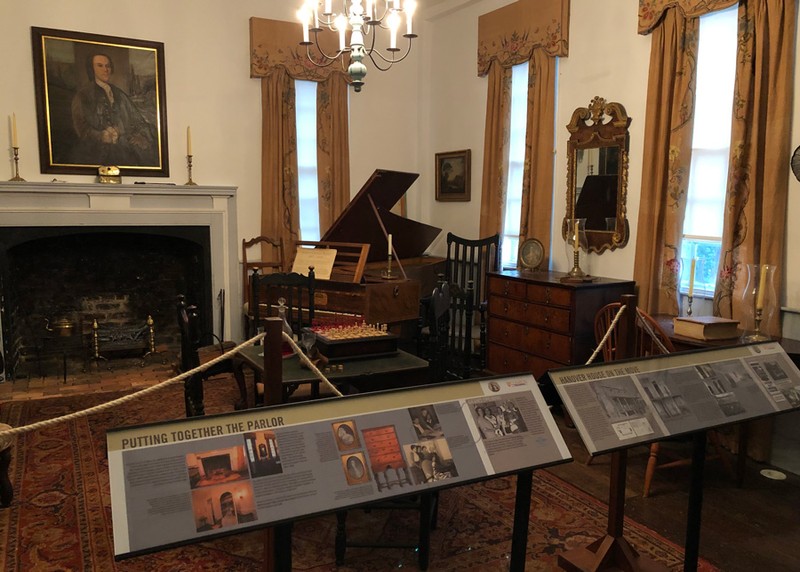Hanover House-Parlor
Introduction
Author-Uploaded Audio
Listen to a narration of this entry's description by Will Hiott.
Text-to-speech Audio
The Parlor, as it is today, has undergone several changes. This room would have been the most formal room in the house and may have hosted special events like the December 1849 marriage supper of William Moultrie and Mary's first-cousin Damaris Elizabeth de St. Julien. As the family's wealth grew from the enslaved labor of Africans, modernization occurred throughout the house, including the additions of 19th-century mantels and a single front door that is 4-feet 2-inches wide.
Images
The Parlor at Hanover House

Backstory and Context
Author-Uploaded Audio
Listen to a narration of this entry's description by Will Hiott.
Text-to-speech Audio
The hand-crewel curtains, embroidered by members of the Spartanburg Committee of the National Society of the Colonial Dames of America (NSCDA). under the leadership of Susan Lewis Brown, now hang in the Parlor and Dining Room and are examples of 18th-cenh.ny design. The Spartanburg Committee and its members continue to support Hanover House today.
The walls of the Parlor tell visitors that this is the most formal mom in the house with the decorative inset design, and the Spartanburg Committee, NSCDA staged this room to recreate 18th-century life of the de St. Julien and Ravenel families. Most items are period antiques or early reproductions. The built-in keystone cupboard, however, is original to Hanover's 18th-century construction.
Hanover contains a collection of original and reproduction prints by noted naturalist Mark Catesby who explored South Carolina around the time Hanover was built.
After Clemson College had saved Hanover from inundation, additional help was needed for Hanover's interior decorating. By 1953, Nettie Smith Owings, of Clemson, and the other members embarked on the formidable task of furnishing Hanover as historically accurate to the time (1700-1750, and families.
The Spartanburg Committee of the NationaI Society of the Colonial Dames of America (NSCDA), photographed in the parlor, began fundraising in the 1950s by hosting silver exhibits, teas and oyster roasts. Those funds furnished Hanover House in period antiques, making it possible to serve as an historic house museum and architectural treasure of "nationaI importance."
Sources
Putting Together the Parlor, Clemson University Historic Properties. Accessed October 1st 2021. https://www.clemson.edu/about/history/properties/hanover/gallery.html.
